Camera aperture and depth of field
As you learned in the introduction, camera aperture is one of the elements controlling the exposure. As a landscape photographer, you will use it extensively to control the look and, ultimately, the style of your images. Read on to find out how to put it to work.
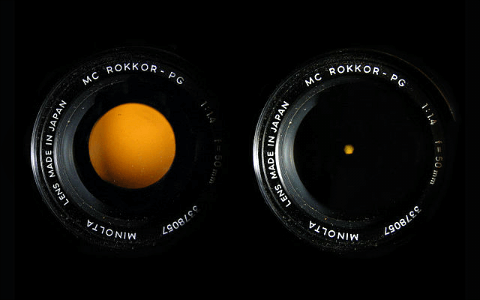 Aperture range of a Minolta lens
Aperture range of a Minolta lensYou may want to rotate your phone in order to improve your browsing experience on this site.
Understanding camera aperture
In photography, aperture describes the opening of a camera lens' diaphragm relative to the focal length of the lens. It is denoted in so called f-numbers. An aperture setting of f/2 refers to a lens whose diaphragm is open to the diameter half its focal length.
For example, a 50mm lens opened to f/2 will have its diaphragm set at the diameter of 25mm (just short of an inch). The same lens stopped down to f/16 will have an opening of barely more than 50 / 16 ≈ 3mm (⅛").
Not surprisingly, the wider the aperture, the more light can pass through the lens during the same period of time. Hence, given the same ISO setting, opening the aperture on your camera lens will reduce the time required to achieve the same exposure value. Respectively, if the exposure time remains the same, a lower ISO value will suffice to retain the exposure.
Camera lenses with the maximum aperture of f/2.8 or wider are generally considered "fast", as they allow for shorter exposure times. This definition of lens speed greatly evolved over the time. The 1911 Encyclopaedia Britannica, for example, referred to lenses with apertures larger than f/6 as "extra rapid".
This definition makes exposure measurement independent from taking into account the focal length of the lens. It also helps to understand some other facts related to lenses:
- The bigger the f-number, the smaller the aperture. This is probably the most confusing thing related to the camera aperture, especially when it is mentioned as a simple number. Indeed, it is hard to comprehend that aperture 2 is wider than 8. However, it perfectly makes sense since f/2 is greater than f/8.
- If you ever wondered why some lenses look ridiculously big, this is the explanation: fast long lenses, i.e. those with long focal lengths and large maximum apertures, just have to be big. A 300mm f/2 lens will sport an opening of 15cm diameter (almost 6"), not a small feat, and a lot of glass for sure.
- This also explains why zoom lenses often loose speed at their long end: retaining the same maximum aperture over the whole zoom range would require a wider diaphragm, and the more so, the bigger the range.
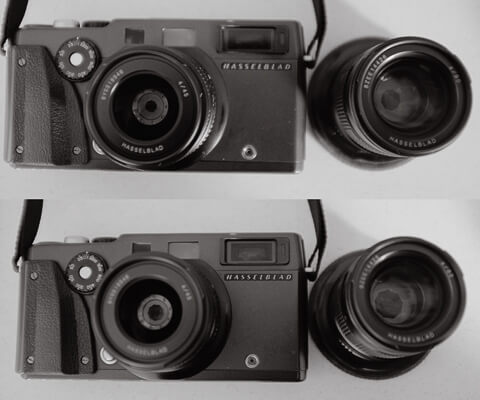 XPan lenses, 45mm and 90mm, set to f/8, above, and f/5.6
XPan lenses, 45mm and 90mm, set to f/8, above, and f/5.6As we have seen, a camera aperture setting refers to the linear dimension of its lens diaphragm, namely its diameter. At the same time, the light amount passing through the lens is proportional to the area of its opening. Thus, halving or doubling the aperture reduces or increases the amount of light by the factor of 4 = 2². To be able to get a finer granularity of exposures through aperture setting, its "main" sequence is paced using the square root of 2, √2 ≈ 1.4, as the multiplier:
f/1, f/1.4, f/2, f/2.8, f/4, f/5.6, f/8, f/11, f/16, f/22, f/32
Moving from one neighbouring value in this sequence to another will halve or double the exposure, depending on the direction. Photographers would say, the exposure value will change by 1 EV, or 1 stop, when referring to the same.
As mentioned above, camera aperture settings are often cited as simple numbers rather than fractions: the denominator is mentioned, the rest is omitted. Sometimes the number is preceded by a capital letter F, and sometimes the fraction is presented in a different form. All of the following notations can be used to describe the same aperture setting:
f/4, f4, F4, 4, 1:4
Width and depth
Aperture setting of a particular lens is the second main factor, after its focal length, affecting the depth of field of the resulting image. This term, often shortened as DOF, refers to the range which appears in focus on the final image. Every object in this range will be rendered sharp, whereas objects lying behind and in front of it will turn up blurry, the more so, the farther away they are from the range limits.
Generally speaking, the longer the lens and the closer your focus point lies to it, the shallower its depth of field, i.e. the narrower its in-focus range.
Conversely, the shorter the lens and the farther away its focus point, the wider its in-focus range.
However, opening the aperture will reduce the depth of field of every lens.
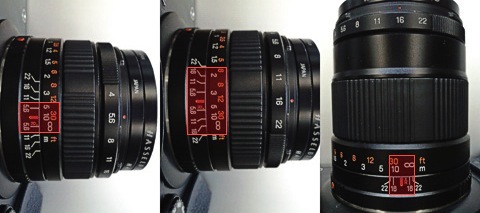 Depth of field comparison of XPan lenses
Depth of field comparison of XPan lensesFrom left to right: 45mm @ f/5.6, 45mm @ f/16, 90mm @ f/16
In the image above, the far end of the DOF range was set to infinity. Stopping the 45mm lens down from f/5.6 to f/16 brings another 3m into focus. The DOF range of the 90mm lens at f/16 is shallower than that of the 45mm lens at f/5.6.
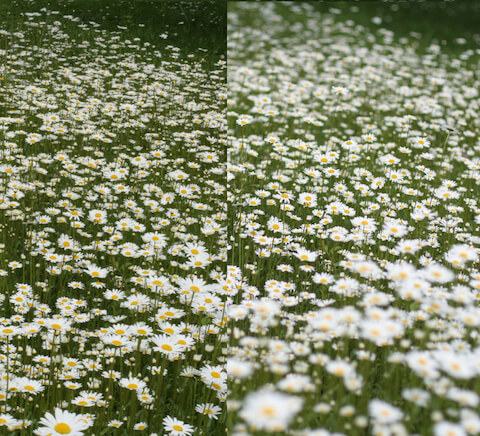 DOF comparison f/22 vs. f/2, 50mm lens (not exact frame)
DOF comparison f/22 vs. f/2, 50mm lens (not exact frame)Wikimedia Commons
Shallow depth of field is by no means a drawback, and often a desired effect for a variety of situations. Not only in portrait photography is it used to throw distracting details out of focus and emphasise the main subject of the image.
Following are simple, high-level guidelines for choosing the camera aperture:
- f/2 - f/2.8: portraits, studio stills, flowers
- f/4 - f/5.6 + high ISO: wildlife, sport, low-light landscapes
- f/8 - f/11: landscapes, candid images, reportage, street photography
- f/16 and beyond + flash: backlit subjects when photographing against a light source
Exercise
Macro photography is one area with extreme shallow depths of field. Why, do you think?
Tags: #aperturepriority #cameraexposure #photographylessons
Other articles on camera exposure
- Aperture and depth of field
- Learn what aperture is, and how its different settings can change the look of your images.
- Shutter speed and motion blur
- Learn how exposure time can add dynamic and movement to your images.
- ISO and digital noise
- Learn how photo noise is related to your chosen ISO value.
- Metering modes
- Understand different metering modes and when to use them.
- Exposure compensation and bracketing
- Learn how to overcome shortcomings of your camera's automatic exposure metering.
- The sunny 16 rule and manual exposure
- Measure up to your camera and take exposure in your own hands with this simple and easy to follow rule.
Tell me what you think!
Is it useful 👍? Awful 👎? Leave a message! Your comments help make this site better (and give me a kick—one way or another).
Popular articles
-
A kind of magic
If a digital picture has to be seen in the real world, printed on a real medium and displayed in a real showcase, its transition from RAW to real is better done in an old school image editor. Enter A…
-
A duck for a dog
If you got your own place on the Internet, helping your visitors find what they are looking for is a great way to engage them and keep them staying a bit longer. A custom site search can achieve just …
-
"Might as well have the best"
Aiming for better images? Think better lenses! This is your most important piece of gear, so you better get it sorted out. — Need some advice?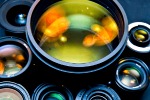
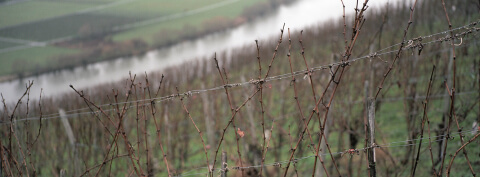
 Become a patron for
Become a patron for